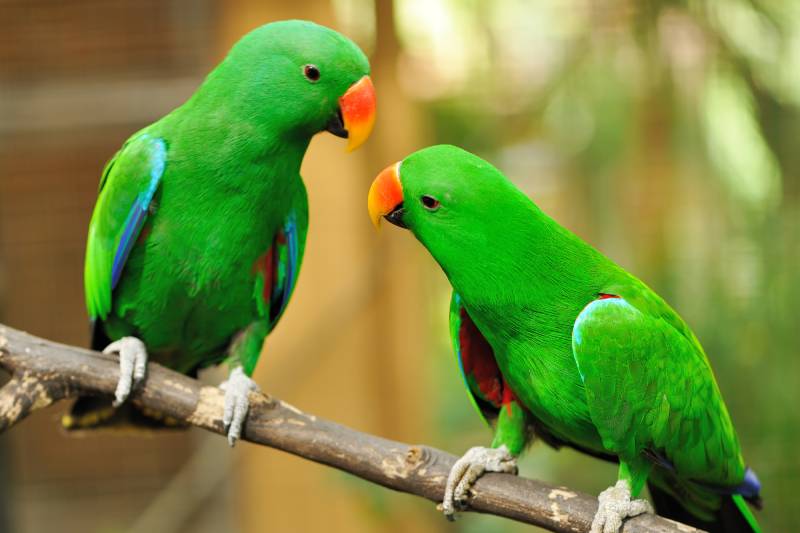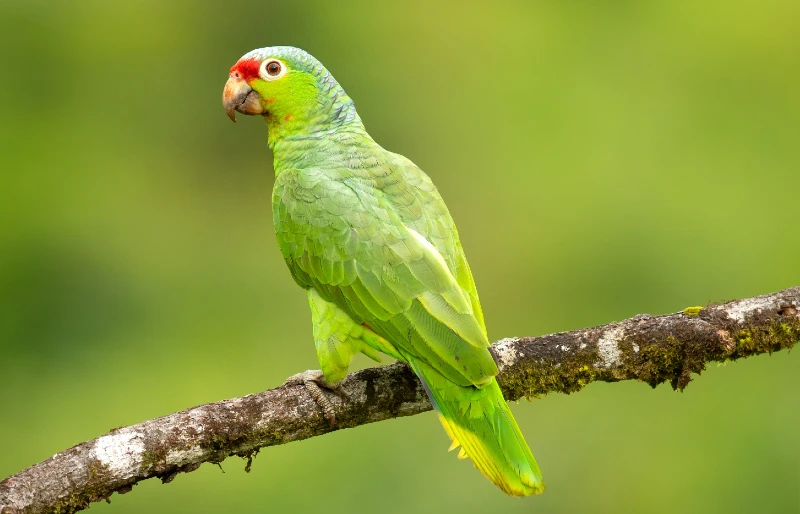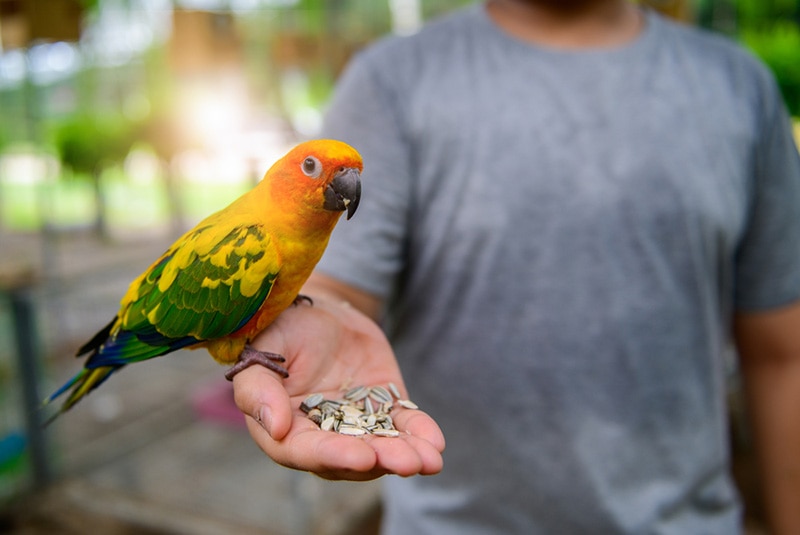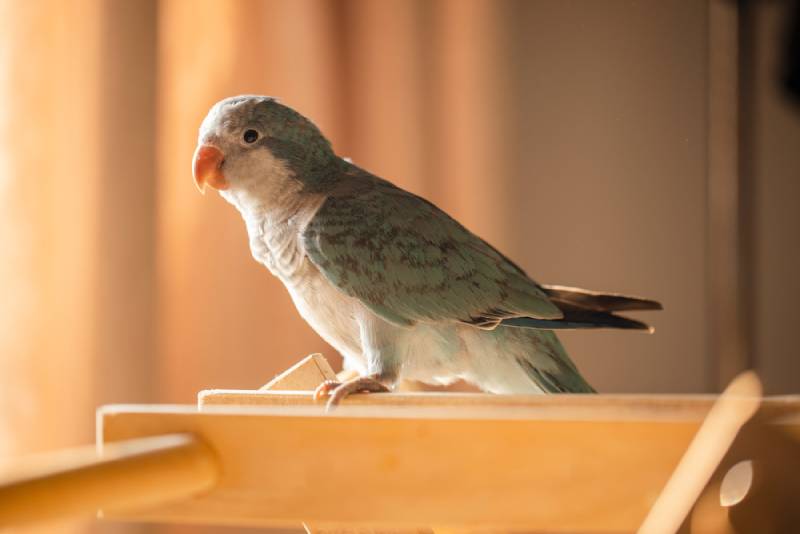15 Parrot Interesting Facts You Need to Know
Updated on

Roughly 6.1 million American households have at least one pet bird 1. Caring for one is a different kind of pet-ownership experience than with other animals. While you don’t cuddle with them nearly as much as you would a dog or cat, they can learn to communicate with you. They are also intelligent animals that require mental stimulation to stay healthy.
Parrots are unique on several scores. They are long-lived, with some species rivaling humans, meaning they truly can be lifelong companions. While you can teach your dog to stay quiet, you’ll have less luck training a parrot not to be vocal. There are some interesting stories when you dig into the facts of these feathered friends.
The 15 Parrot Interesting Facts
1. Parrots and Other Birds Are Living Dinosaurs
Parrots and other birds are part of a subclass of animals called archosaurs. Like reptiles, they survived the great extinction event of the late Cretaceous period. Feathers may or may not have played a role in their fate, yet it is the one distinguishing feature of these living dinosaurs 2.
2. The Parrot’s Ancestors Developed Beaks About the Same Time They Lost Their Teeth
The parrot’s beak is another unique trait of birds, although other animals have a similar structure. Interestingly, their early ancestors had teeth instead. It wasn’t until later in their evolution that parrots and other birds lost their teeth and gained their beaks. Scientists estimate the two monumental changes occurred about 100 million years ago 3.

3. Parrots Still Have the Genes to Grow Teeth
While parrots are well-equipped with their beaks and don’t necessarily need teeth, they may still possess the ability to grow them. All birds have a gene that deactivates, or prevents, teeth from growing. If that gene is manipulated, birds can actually grow teeth. Again, teeth aren’t necessary, as the beak performs most of the same functions.
4. Parrots Have Two Stomachs
Parrots have a digestive system that allows them to break down food quickly to avoid excessive weight for flying. The first chamber, called the proventriculus, starts the process by releasing digestive juices that initiate the breakdown of food. The food then travels to the gizzard, where the strong musculature grinds the food down even further. This adaptation makes teeth unnecessary for parrots and other birds.
5. Parrots Come in All Shapes and Sizes
Parrots are a diverse group of species found primarily in the Southern Hemisphere. Nevertheless, much variation exists among them. They can weigh between 0.4 ounces and 9 pounds and range in size from 3.5 to 40 inches 4.

6. The Goffin’s Cockatoo Can Make and Use Tools
The parrot family includes one of the most intelligent species among their numbers: the Goffin’s Cockatoo 5. This bird has a unique place in the animal kingdom as one of the few species that can make and use tools. It’s a skill that scientists reserve for mainly primates, including humans.
7. Sulfur-Crested Cockatoos in Australia Have Figured Out How to Open Garbage Cans
Australians call them “trash parrots” and consider them a nuisance. The sulfur-crested cockatoo has learned to put their smarts to use by opening garbage cans. After all, free food is free food. The fascinating thing about this behavior is that birds learn to do it by observing others getting to the goods. It helps that they’re social creatures and can share their knowledge with others.
8. Alex, the African Grey Parrot, Could Identify Over 100 objects
African Grey Parrots are also known for their remarkable intelligence. A bird named Alex 6 helped researchers learn the scope of their abilities. Before dying in 2007, Alex picked up over 100 words for objects and actions. He could count and knew the names of colors. He could communicate with his handlers and even taught other birds some of his tricks. Alex made “bird brain” the ultimate misnomer.

9. African Grey Parrots Are Capable of Cooperative Problem-Solving
The talents of the African Grey Parrot don’t stop there. Researchers working with these birds found they could pick up cooperative problem-solving skills and collaborate with other parrots 7. Parrots are social, so this trait isn’t entirely unexpected. The birds couldn’t complete all their tasks, however, this study shows that parrots are capable of much more than we give them credit for.
10. One Parrot Was the Last Speaker of a Dead Native Language
German naturalist Alexander von Humboldt traveled to Venezuela in 1800 to map the Orinoco River and its tributaries. Along the way, he met a special and very old parrot that would help him document the language of an extinct native tribe. The parrot played a pivotal role in teaching von Humboldt words of their native but dead language.
11. Wild Populations of Monk Parakeets Exist in Some American Cities
We mentioned how parrots live primarily in the Southern Hemisphere. The exception to that statement is the pockets of Monk Parakeets that live in several American cities, including Dallas, New York, and Chicago. The birds either escaped or were released. Their communal nesting behavior undoubtedly has played a role in their survival in these cool climes.

12. The Kakapo Is a Nocturnal Parrot
The Kakapo is one of the most unusual parrots. It is nocturnal, which is certainly an anomaly with these birds. It’s also flightless and the one of the largest of the group, weighing up to 9 pounds. The species is also endangered.
13. There Are 372 Species of Parrots
Parrots comprise just about 2% of the world’s 18,000 bird species, numbering just around 350 members. Yet, they have made a profound impact on our lives as beloved pets. Sadly, many species are threatened or endangered. Humans and their associated environmental impacts have led to decimated populations. The illegal pet trade has also adversely affected many species.
14. The Moluccan or Salmon-Crested Cockatoo Is the Loudest Parrot
Parrots are loud by nature. Many live in tropical rainforests, making communication difficult unless you’re heard. The species vary in how vocal they are. According to the Guinness Book of World Records, the Moluccan or Salmon-crested Cockatoo has the distinction of being the loudest of parrots. Researchers documented their shrieks at 135 dB. That’s like standing 100 yards from a jet engine.
15. The Intelligence of Parrots May Help Them Live Such Long Lives
We know that parrots are intelligent. It certainly comes into play with their wide range of abilities. Scientists have discovered the birds’ brain size in proportion to their body is similar to humans and theorize it may play a role in their astonishing longevity. Their intelligence could give them a competitive edge in finding food, avoiding predators, and problem-solving.
Conclusion
Parrots are some of the most beautiful and fascinating creatures on the planet. Their intelligence is remarkable, helping them solve life’s little difficulties and even to communicate with people. Their sociability may also play a role in survival as they can learn from each other.
- See Also: How Long Do Parrots Live
Featured Image Credit: haveseen, Shutterstock











